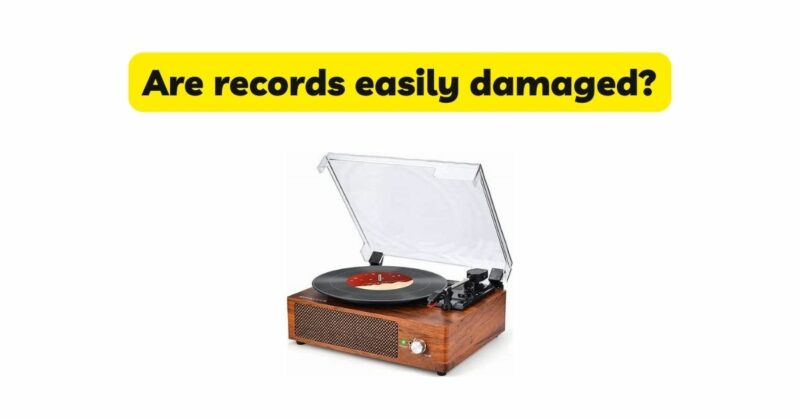Vinyl records have garnered a resurgence in popularity, attracting music enthusiasts with their warm sound and nostalgic charm. However, as cherished as they are, vinyl records are also delicate artifacts that require careful handling and storage. In this article, we will delve into the potential vulnerabilities of vinyl records and explore the factors that can lead to damage. By understanding these risks, collectors and music lovers can take proactive measures to preserve their cherished vinyl collections.
Section 1: Understanding the Composition of Vinyl Records
To comprehend the susceptibility of vinyl records to damage, it is essential to understand their composition. Vinyl records are typically made of polyvinyl chloride (PVC), a type of thermoplastic polymer. The audio information is etched into the surface of the record in the form of grooves. These grooves are delicate and can be easily affected by various external factors.
Section 2: Common Causes of Record Damage
2.1 Physical Handling: Improper handling is a significant cause of damage to vinyl records. Fingerprints, smudges, and oils from hands can transfer onto the record surface, potentially affecting sound quality and causing visible blemishes. Mishandling the record itself, such as dropping or mishandling the stylus, can lead to scratches, scuffs, or even cracks.
2.2 Dust and Dirt: Dust and dirt particles, when present on the record surface or within the grooves, can cause audible pops, clicks, and distortions during playback. Moreover, when records are cleaned improperly or using harsh cleaning agents, they can be more susceptible to damage.
2.3 Environmental Factors: Environmental conditions play a crucial role in the well-being of vinyl records. Exposure to excessive heat can cause records to warp, while high humidity levels can lead to mold growth and degradation of the record material. Additionally, prolonged exposure to direct sunlight can result in fading of album covers and potential damage to the record surface.
2.4 Storage Issues: Improper storage is another significant factor that can contribute to record damage. Stacking records haphazardly, leaning them against each other, or subjecting them to pressure and weight can lead to warping, bending, or groove damage. Insufficient protection, such as lack of inner sleeves or proper outer jackets, can also result in scratches and dust accumulation.
Section 3: Preventive Measures for Protecting Vinyl Records
3.1 Gentle Handling: Handle vinyl records with clean and dry hands to prevent fingerprints and oils from transferring onto the surface. When holding the record, avoid touching the grooves and handle it by the edges or inner label area. Similarly, exercise caution when operating the stylus, ensuring gentle placement and removal to avoid damaging the grooves.
3.2 Proper Cleaning: Regularly clean vinyl records using gentle cleaning methods. Use a carbon fiber brush or antistatic brush to remove surface dust before and after playback. For deeper cleaning, employ a specialized record cleaning solution, along with a soft microfiber cloth or record cleaning brush. Always follow proper cleaning techniques to avoid introducing additional damage.
3.3 Controlled Environmental Conditions: Store vinyl records in a cool, dry environment away from direct sunlight and extreme temperature fluctuations. Maintain a moderate humidity level to prevent mold growth or record material degradation. Investing in a dehumidifier or utilizing moisture-absorbing products can help maintain the desired humidity level in the storage area.
3.4 Proper Storage: Store vinyl records upright in sturdy record storage boxes or on specially designed record shelves. Avoid leaning records or stacking them tightly, as this can lead to warping and damage. Utilize inner sleeves to protect the record surface and outer jackets to shield against dust, light, and potential accidents.
Section 4: Professional Restoration and Repair
If a vinyl record has suffered damage, professional restoration and repair services are available. These experts can address issues such as deep scratches, warping, or groove damage through specialized techniques. It is important to consult with professionals who have experience in vinyl record restoration to ensure the best results without further compromising the record’s integrity.
Conclusion:
Vinyl records possess a delicate nature that requires careful handling and storage. The susceptibility of records to damage emphasizes the importance of proactive measures to preserve their quality and longevity. By understanding the vulnerabilities and implementing preventive measures such as gentle handling, proper cleaning, controlled environmental conditions, and appropriate storage, collectors and music enthusiasts can safeguard their cherished vinyl collections. With diligent care, vinyl records can continue to provide the rich and immersive listening experience they are renowned for, delighting generations to come.


